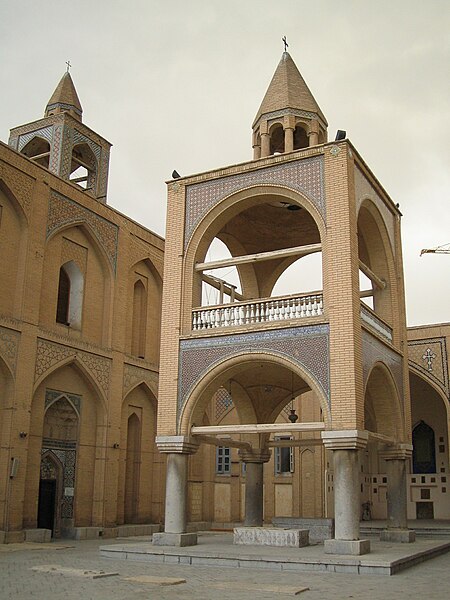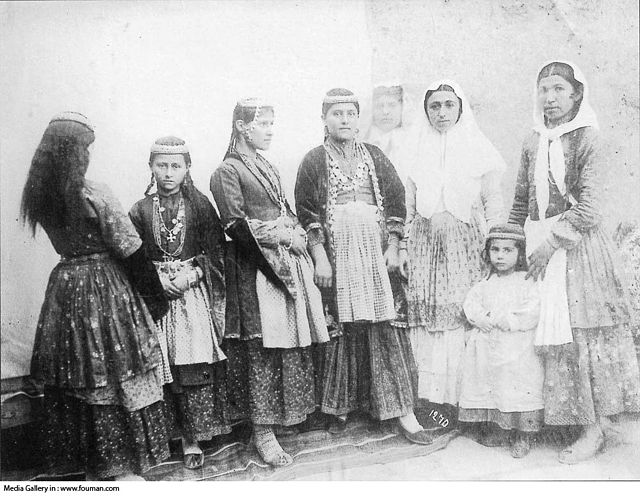Christianity in Iran dates back to the early years of the religion during the time of Jesus, predating Islam. Through this time the Christian faith has always been followed by a minority of the population of Iran under its different state religions: Zoroastrianism in historical Persia, followed by Sunni Islam in the Middle Ages after the Arab conquest, then Shia Islam since the Safavid conversion of the 15th century. However, Christians comprised a larger share of the population in the past than they do today. Iranian Christians have played a significant part in the historical Christian mission: currently, there are at least 600 churches and 117,000–150,000 Christians in Iran; some sources claim significantly higher numbers.
The Armenian Orthodox Vank Cathedral of Isfahan (completed 1664) is a relic of the Safavid era.
Gregory
Bademus
Asyncritus
Iranian Armenians, also known as Persian Armenians, are Iranians of Armenian ethnicity who may speak Armenian as their first language. Estimates of their number in Iran range from 70,000 to 500,000. Areas with a high concentration of them include Tabriz, Tehran, Salmas and Isfahan's Jolfa quarter.
The Armenian St. Thaddeus Monastery, or "Kara Kelissa", West Azerbaijan province, believed by some to have been first built in 66 AD by Saint Jude.
Armenian Gospel Book made in Isfahan in 1655. Chester Beatty Library
Iranian Armenian women in the Qajar era
Shoghakat Armenian Church in Tabriz








